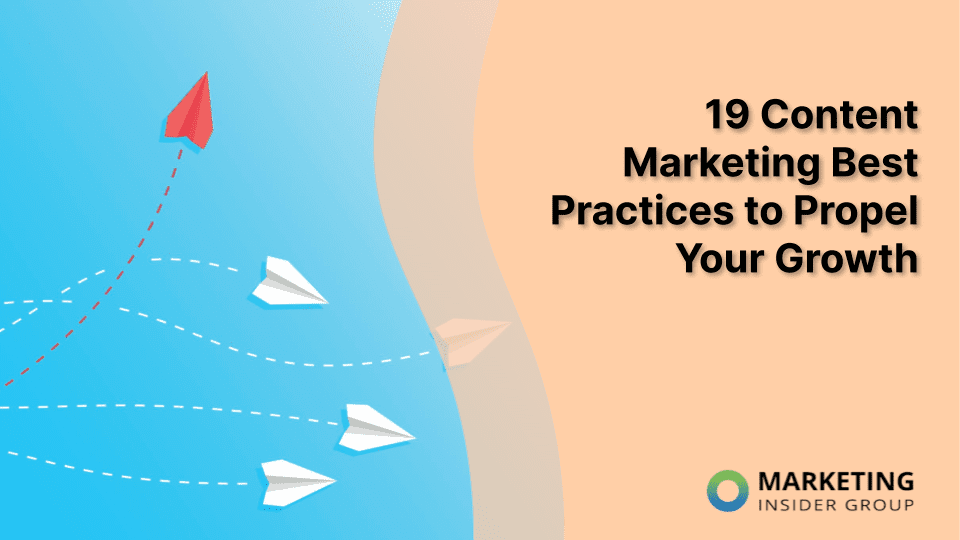Business
Content Marketing Best Practices: 9 Steps to Success




Introduction
Many brands struggle with publishing mediocre or low-quality content, even though they know how important it is. With over 70 million new posts published each month, it's crucial to have a dedicated content marketing strategy. But having a strategy isn't enough – you need to continuously create engaging and effective stories that resonate with your audience. In this article, we'll explore the new best practices in content marketing and how they can influence your content creation and distribution methods.
Step 1: Develop a Growth Strategy
Before integrating content into your growth strategy, you need to establish a growth strategy itself. Start by planning short- and long-term growth projections and goals. Once you have a strategy in place, you can align your content marketing strategy with specific goals and use key performance indicators (KPIs) to track its effectiveness.
Step 2: Research Your Audience Consistently
Don't make the mistake of assuming you know your audience without thorough research. Revisit your buyer personas, accounts, and general audience segments regularly to make sure you are targeting the right people with your content.
Step 3: Pick the Right Platforms
Don't try to be everywhere at once – it's not feasible. Choose platforms that align with your goals and audience. For example, if your target audience is Millennials and Gen Z, consider focusing on platforms like Snapchat rather than Twitter.
Step 4: Focus on Building Backlinks
Backlinks are essential for driving growth. When other websites link to your content, it boosts your traffic and brand awareness. Backlinks also signal to Google that your content is trustworthy, which can help with ranking. Focus on creating content that is link-worthy to encourage other websites to link to your content.
Step 5: Create Valuable and Shareable Content
Your content should provide value and be shareworthy. People share content that is valuable, interesting, and emotionally impactful. Make sure your content meets at least one of those criteria to increase its shareability.
Step 6: Repurpose Your Content
You can maximize the impact of your content by repurposing it into different formats. From one blog post, you can create videos, infographics, podcasts, and more. This allows you to reach a wider audience and increases the chances of your content being remembered.


Step 7: Tailor Your Content to the Reader's Intent
When creating content, consider the reader's intent based on the keyword they used to find it. Your call-to-action should align with their intent and stage in the buyer's journey. Tailor your content and CTAs accordingly to increase conversions.
Step 8: Establish Expertise in Specific Areas
Instead of trying to be an expert in every niche, focus on specific areas where you can showcase your expertise. Google prefers ranking content from authoritative and trustworthy experts. By narrowing your focus, you increase your chances of ranking higher in search results and gaining credibility.
Step 9: Embrace Account-Based Marketing
Account-based marketing (ABM) is a powerful strategy for targeting high-value prospects. Create valuable content that addresses the specific concerns and needs of your target accounts. ABM has been shown to increase ROI and should be a part of any B2B content marketing arsenal.
Conclusion
Content marketing is an essential component of any growth strategy, but it must be approached strategically and purposefully. By following these best practices, you can ensure that your content is engaging, effective, and aligns with your overall growth objectives. Implementing these practices can make a significant impact on your marketing efforts and drive long-term results.
Did you miss our previous article…
https://dailymetronews.com/10-profitable-side-hustles-to-make-money-in-2023/


Hello! I’m the social media marketing manager at DailyMetroNews.com, where I merge my love for journalism with the digital landscape. My academic journey in journalism began at Ohio State, and it’s been an exciting ride ever since.
Outside of work, you’ll find me cycling through beautiful trails, embracing the calm of yoga, or crafting playful poetry online. I’m also a travel enthusiast who cherishes family time, especially with my not-so-conventional Golden Retriever, Greta.
I’m passionate about connecting people through stories and bringing relevant news with a personal touch. If you’re into insightful storytelling or curious about the world, I invite you to follow my journey.
For a mix of news, life musings, and a glimpse of my quirky poetry, follow me on Instagram. Let’s connect and share in this adventure together!








